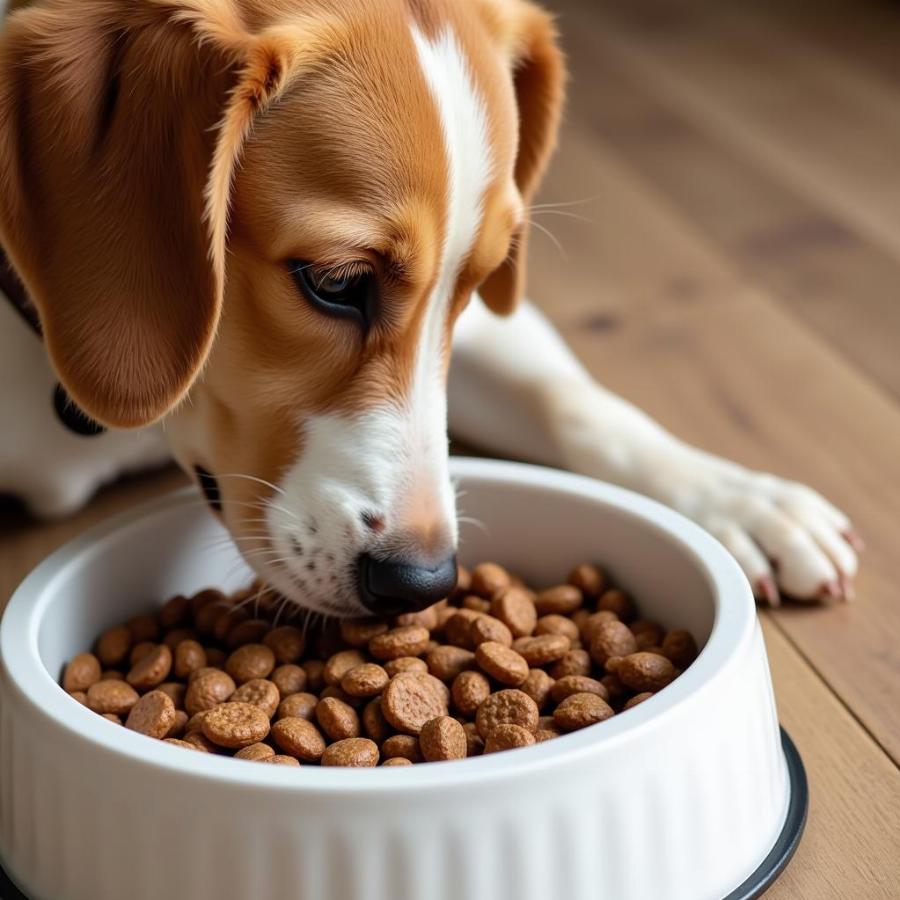Dealing with dog shedding can feel like a never-ending battle, but it’s a natural process for most breeds. Understanding why dogs shed and implementing the right strategies can significantly reduce the amount of fur floating around your home and clinging to your clothes. This guide will provide you with practical tips and expert advice on how to solve dog shedding woes, helping you maintain a cleaner home and a happier, healthier dog.
Understanding Why Dogs Shed
Before diving into solutions, it’s helpful to understand why dogs shed in the first place. Shedding is a normal process of hair growth and replacement. Like humans, dogs lose old or damaged hair, and new hair grows in its place. Factors like breed, season, diet, and overall health can influence the amount of shedding. Some breeds, like German Shepherds and Huskies, are known for their heavy shedding, while others, like Poodles and Bichon Frises, shed minimally. Seasonal changes, particularly the transition from winter to spring, can trigger increased shedding as dogs shed their thicker winter coats.
Effective Strategies to Minimize Dog Shedding
Implementing a consistent grooming routine is crucial for managing dog shedding. Regular brushing helps remove loose hair before it lands on your furniture and clothes. The type of brush you use depends on your dog’s coat. Slicker brushes work well for removing loose hair from double-coated breeds, while bristle brushes are suitable for short-haired dogs.
Bathing your dog regularly can also help reduce shedding. Using a dog-specific shampoo and conditioner can help loosen and remove dead hair. However, avoid over-bathing, as it can strip the dog’s coat of its natural oils and lead to dry skin, which can actually worsen shedding.
The Role of Diet in Dog Shedding
A balanced and nutritious diet plays a significant role in your dog’s coat health and shedding. Ensure your dog’s food contains high-quality protein, fatty acids, and essential vitamins and minerals. These nutrients support healthy skin and coat growth, reducing excessive shedding. Consult your veterinarian for recommendations on the best diet for your dog’s specific needs.
 Dog Eating Healthy Dog Food
Dog Eating Healthy Dog Food
“A balanced diet is essential for a healthy coat,” says Dr. Emily Carter, a certified veterinary dermatologist. “Providing your dog with the right nutrients can significantly minimize shedding and improve overall coat condition.”
Addressing Underlying Health Issues
Excessive shedding can sometimes be a sign of an underlying health issue. Conditions like allergies, parasites, hormonal imbalances, and certain skin infections can cause increased shedding. If you notice a sudden increase in shedding, consult your veterinarian to rule out any medical problems.
Why is My Dog Shedding So Much?
If your dog’s shedding seems excessive, there are several possible reasons. Seasonal changes, as mentioned earlier, can trigger increased shedding. Certain breeds are also naturally prone to heavier shedding. However, if the shedding seems out of the ordinary, it’s best to consult a veterinarian to rule out any underlying health concerns. A big chow chow dog for example, is known for its dense coat and significant shedding.
How Can I Reduce Dog Hair in My Car?
Keeping dog hair under control in your car can be a challenge. Using a dog seat cover hammock can protect your car seats and make cleanup easier. Regularly vacuuming your car and using lint rollers can also help remove dog hair.
What Foods Can Help with Dog Shedding?
Providing your dog with a high-quality diet, like dinovite dog food, can contribute to a healthy coat and potentially reduce shedding. Look for foods rich in omega-3 fatty acids, which are beneficial for skin and coat health.
What are the Symptoms of a Blockage in a Dog?
While not directly related to shedding, it’s important to be aware of potential health issues in dogs. If you suspect your dog has a blockage, look for symptoms of blockage in dog such as vomiting, loss of appetite, and lethargy, and contact your veterinarian immediately.
Conclusion
Managing dog shedding requires a multi-pronged approach. By understanding the reasons behind shedding and implementing consistent grooming practices, dietary adjustments, and addressing any underlying health concerns, you can significantly reduce the amount of fur in your home and keep your dog’s coat healthy and shiny. Remember, regular brushing, a healthy diet, and occasional baths are key to solving dog shedding challenges.
FAQ
-
How often should I brush my dog? The frequency of brushing depends on your dog’s breed and coat type. Generally, brushing several times a week is recommended for most dogs.
-
Is there a way to completely stop dog shedding? No, shedding is a natural process for most dogs. However, you can significantly reduce shedding with proper care.
-
Can allergies cause increased shedding in dogs? Yes, allergies can lead to skin irritation and increased shedding.
-
What type of brush is best for my dog? The best type of brush depends on your dog’s coat. Consult a groomer or veterinarian for recommendations.
-
Are there any special shampoos that can help with shedding? Yes, there are shampoos and conditioners specifically formulated to reduce shedding.
-
Should I shave my dog to reduce shedding? Shaving is generally not recommended as it can interfere with the dog’s natural temperature regulation.
-
What should I do if my dog’s shedding suddenly increases? Consult your veterinarian to rule out any underlying health problems.
Related Questions and Further Reading
- How to choose the right dog brush for your dog’s coat
- Understanding the nutritional needs of different dog breeds
- Common skin conditions in dogs and their treatment
Beaut Dogs is your one-stop resource for all things related to show dogs, offering reliable, helpful, and in-depth information on the world of canines. From breed characteristics to grooming tips, we’ve got you covered. When you need assistance, please contact us via Email at [email protected] for detailed and accurate answers from Beaut Dogs. Visit https://beautdogs.com today!